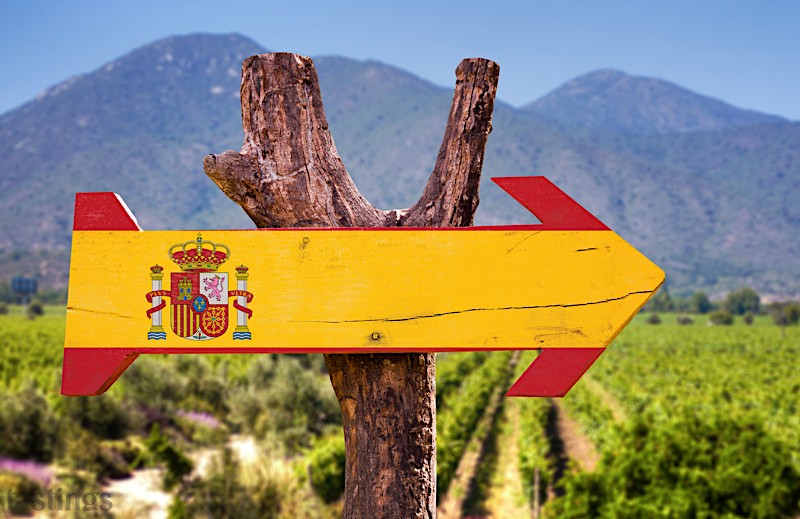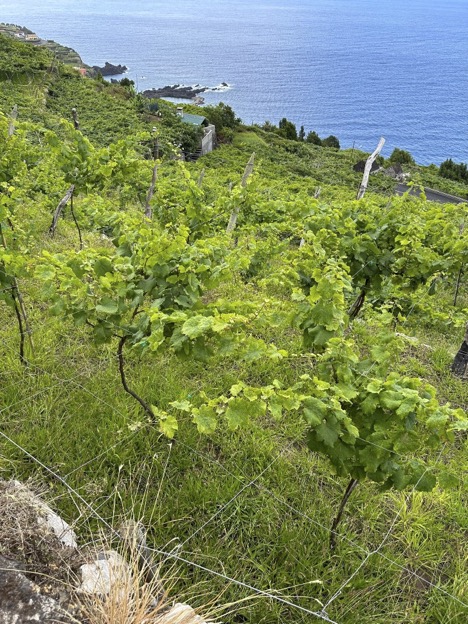
When first encountering Spanish wines, one could easily be overwhelmed by any number of delicious, good value and quality bottles, as well as totally unfamiliar varietals and producers. With a little digging and education, the beautiful and diverse world of Spanish wines can truly expand your options as well as your palate.
Spain offers many different wine regions. There are picturesque mountains, valleys, the countryside, amazing beaches, and beautiful native parks. In every region there is rich history reflected in the winery architecture, the vineyard design, the colors and scents of different terroirs, the local cuisine of the region complimenting the fruit of the vines, and of course the wine itself.
Let’s start our journey on the Northwest Coast in Galicia. This region faces the sea and receives plentiful rain, with a climate suited to producing the best Albariño and Godella. The stunning acidity and citrus notes make these white wines a perfect pairing with the local seafood. Paula Fandiño, Winemaker of “Mar de Frades” shows all her passion in this amazing Albariño wine.
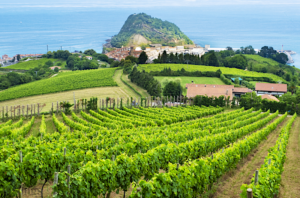
Journeying northward, we move towards the king and queen wine regions in Spain; Rioja D.O.Q (Designation of Origin Qualified), and Ribera D.O.Q. Both are world class viticultural regions and the flagship for Spanish premium quality red wines. Experts say that the best thing that has happened to the Rioja wine is the arrival of the Ribera del Duero D.O.Q. to elevate the competition and quality of production in both regions. Winemakers here are known for creating high quality, long-lived, concentrated, deep-colored and full-bodied wines.
Both areas are blessed with a continental climate in a Mediterranean country. Short hot summers are followed by a precipitous drop in temperature come autumn. A lower average temperature throughout the growing season affects the flowering, fruit set, and overall ripening. Therefore, grapes have a later budbreak in the spring and ripen early in the fall, allowing grapes an extended period of slow growth in the middle of the season to extract as much as possible from the vineyards. Both areas are at high altitude reaching 900m in Rioja and 1100m in Ribera del Duero which helps to curtail temperature spikes in an increasingly warmer world.
So many single vineyards wines have been produced in Rioja, that classifications needed to be updated. We were used to Crianza, Reserva and Gran Reserva, designations based on time spent in oak, age of barrels and ageing in the bottle. However, these designations are too broad to allow these complex wines to speak of their terroir. Recently implemented geographical indications are described on the labels in 3 ways: 1. “Single Vineyard o Viñedo Singular” 2.“State Wine o Vino de Municipio” and 3. “Vino de la Zona , Wines from Rioja“ https://riojawine.com/en/rioja/types-of-wine/
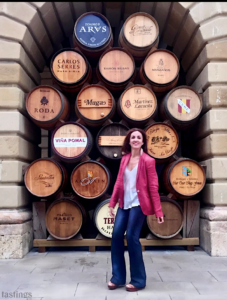
Ancestral wineries such as Lopez de Heredia, Muga, Remelluri, Bodegas Sierra Cantabria, Ramirez de Garnuza, Marqués de Murrieta, Pujanza, Bodegas Roda are known for their meaty and full-bodied wines. CVNE, Finca Allende, Finca Valpiedra , Marqués de Vargas, Continuo, also offer wines that are emblematic of this area – not only in red wines but also in white. It is amazing to taste the impressive quality of the region’s whites. A historic leader in the category is the Lopez de Heredia winery, with Viña Tondonia winning numerous awards. It is worth noting that white wine has become of increasing importance for a number of producers – and is set to be the next big trend in Rioja. What they have in mind is not the simple, conventionally made whites offering fresh and fruity qualities, but ‘elaboraciones especiales’. We are talking about mature wines from selected locations, vinified in a way not to be found elsewhere in Spain. In addition to the classic varieties Viura and Malvasia, autochthonous grapes are also showing what they can do. Whites like Maturana Blanca and Tempranillo Blanco have the possibility of transforming Rioja’s white wines. Not only that, but as wood-refined wines, they have the potential to revive the Reserva and Gran Reserva category for whites. The future is filled with excitement and interest.
Alongside these venerable and traditional wineries new producers are emerging. First established out of their garages and later in a caves, these start-ups are taking full advantage of the microclimate. Bodega Contador offers us a new concept of wines – green pruning, cluster thinning and pre-harvest. The grapes are harvested by hand and in crates, seeking maturity but not over-ripeness. Very little sulfur is used, and the wines are neither filtered nor clarified.
Additional wonders in Rioja are “Las Lomas “from Miguel Merino winery and “Miguel Merino white.” Both are single plot wines, where a special pruning occurs just after the full moon. Very much worth getting your hands on, but these amazing wines are quite difficult to find.
Aalto, Hermanos Sastre, Bodegas Mauro, Valdemonjas with “Abrí las Alas” wine, Magna Vides “Bancales del Sardal wine”, Pago de Capellanes, Pago de Carraovejas, Bodegas Mauro, Bodega Pesquera , Emilio Moro, Alonso del Yerro , are great wineries in this area that exemplify the quality of the next generation. And not to be overlooked is a winemaker “Francisco Barona”, who studied in Bordeaux and is making wines with a French character that seemingly makes everyone adore them.
Of course no one can forget Bodegas Vega Sicilia, the pioneer from the 19th century, currently producing some of the most admired red wines in the world by winemaker Peter Sisseck MW: “Alion” and ”Vega Sicilia Unico” in addition to the fabulously priced “Dominio de Pingus “and “Hacienda Monasterio.”
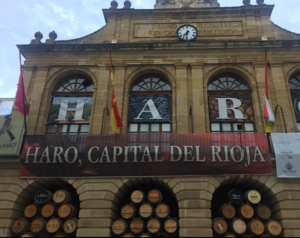
To complete the tour of North of Spain, nestled above the hills in Tarragona, is a Denomination of Origin established in 2004. Priorat, known in the local Catalan and now throughout the rest of Spain, produces beautiful Garnacha. This is one of the most terroir driven areas in Spain. The most important element of Priorat is a very particular schist, known as llicorella locally. It is a relatively soft reddish-black slate with small particles of mica quartz that is both cool and damp enough to nourish deep-rooted vines in the particularly dry, Mediterranean summers of Priorat.
Imports of Spanish wines have grown across the globe, so be on the lookout for: Clos Morgador de René Barbier , Clos Martinet , Clos Fortá, Clos de L ́Obiet de Costes del Siurana, Alvaro Palacios, the public face of Priorat, and his fascinating wine L ́Ermita, is particular favorite. But you don’t want to miss the chance to taste any and all these wines as starting your own Gira De Fuerza has never been easier.

